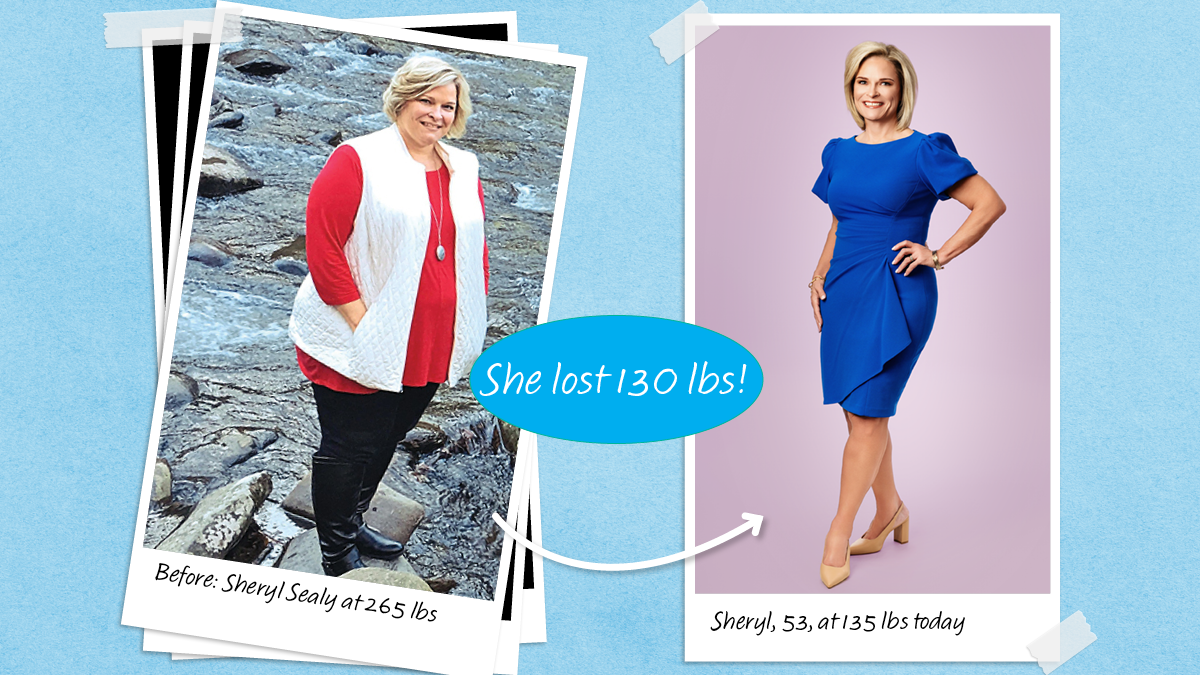Fitness
Walking Your Way to Better Health

TUESDAY, April 16, 2024 (HealthDay News) — Walking is one of the best exercises available to average folks, and it can be as easy as stepping out your front door, experts say.
“It is something you can easily fit into your lifestyle,” said Dr. James McDeavitt, professor of physical medicine and rehabilitation and executive vice president and dean of clinical affairs at Baylor College of Medicine.
Walking has been shown to improve heart health and contribute to better mental health. It can even ward off osteoporosis by toughening up bones, McDeavitt added.
Walking also serves as a wonderful entry point for someone looking to improve physical activity, since it involves less wear and tear on the joints than running.
Even for people with health problems that impair mobility, walking is a good exercise option, McDeavitt said. Indoor running tracks provide a safe environment, particularly if someone has the company of a caregiver or loved one.
However, treadmills and other automated cardio machines should be avoided by those with severe mobility issues, as there’s a greater risk of injury with those devices.
Folks who’ve been inactive should start by consistently walking five to 10 minutes a day, and then gradually increasing that time, McDeavitt said.
McDeavitt recommends walking at a low intensity for a longer duration to get the most out of walking, rather than trying to power-walk.
However, walking at a faster pace can intensify a walk just as well as adding ankle or wrist weights, without the extra hassle, McDeavitt added.
Walking shoes should have a stiff rubber or athletic sole, and fit well with some wiggle room in the toe area, McDeavitt said.
People should also buy shoes with arch support and cushioning, as well as shoes that sit higher on the ankle if they need more stability for walking on uneven terrain.
Folks who start to experience rubbing, chafing or red spots should visit a running shoe store, McDeavitt said. The experts there will generally be able to find a shoe that fits a person’s specific needs.
Walkers also should feel free to mix in other forms of exercise, to provide the added benefits of cross-training.
“Mixing up your routine will improve cardiovascular fitness, so look to add in resistance and strength training with weights to improve bone health,” McDeavitt said in a Baylor news release. “Low intensity exercise mixed with high intensity exercises for at least 30 minutes each will allow you to get the most out of your physical routine and lead to overall better well-being.”
SOURCE: Baylor College of Medicine, news release, April 14, 2024

Fitness
How to train your brain to truly enjoy exercise, according to science

Truth: They woke up like this. Some people really are more inclined to find joy in exercise. But! You can rewire your brain to join that ‘love it’ group, research shows.
When experts measured the electrical connectivity in the brains of people who are recreationally active, they found that those who perceive themselves as being highly tolerant of physical effort had greater levels of ‘remembered pleasure’ afterward, according to the new study by Florida International University. Meanwhile, those who said they were not as tolerant had a certain amount of ‘anticipatory dread,’ or negative feelings, before the work even started.
The good news is that you can teach yourself to be more accepting, physically and mentally, of movement—which will help you feel excited about exercise in general and crave it more often. By trying some (or all!) of these tactics, you’ll likely notice benefits immediately, says study lead Marcelo Bigliassi, PhD. To extend the effect, keep efforts ongoing, so subtle changes compound over time. Onward!
Meet the experts: Marcelo Bigliassi, PhD, is an assistant professor of neuroscience and psychophysiology at Florida International University. Diogo Teixeira, PhD, is a professor on the physical education and sport faculty at Lusófona University in Lisbon, Portugal.
1. Add appeal to the flavour of exercise you already like.
Let’s say you don’t mind weight lifting but definitely don’t have the can’t-wait feels leading up to a workout. You can create artificial motivation and enjoyment by listening to music or a podcast while you sweat, using virtual reality, or even just engaging in positive self-talk, Bigliassi says. Or perhaps lifting with a group or a friend is the missing ingredient for you. ‘You’re creating outside signals that can help you push a little bit harder and a little bit faster.’ The goal is to foster positive experiences with your sweat sessions. Gradually, the emotion will become second nature without these external cues.
Not sure where to start with finding your best-match activity? Think back to your recent past, and even to your childhood, says Bigliassi. ‘There are usually clues.’ For example, if you used to love swimming at your neighborhood pool, maybe that could translate to swimming laps at your local gym. Or perhaps you were a dancer at one point in your life. Taking a virtual or IRL dance fitness class could spark passion.
2. Challenge yourself *just* enough.
No matter what you’re doing, the activity needs to be tough enough that you’ll have a feeling of accomplishment that makes you want to repeat it. But it should also be within your capabilities, in order to protect your sense of self-efficacy (that is, your belief in your abilities), says Bigliassi. When people experience an exercise intensity that’s not aligned with their preference or tolerance, they exercise less in the future, research shows.
Take this thinking a step further: By choosing, say, a running pace you consider pleasurable (read: not all-out), you may find running more enjoyable—and more easily repeatable in the future. This ‘autonomy promotion’ also applies to resistance training, says researcher Diogo Teixeira, PhD. So if resting longer between sets makes you feel better, do it. (It’ll create those positive associations in your brain.) ‘More is not always better, and a pleasurable activity will be more easily sustained over time,’ Teixeira says.
Monitoring with a tracker can also allow you to see the work you’re putting in, which improves mindset around fitness and, therefore, happiness pertaining to exercise, found a study in the Journal of Medical Internet Research.
3. Send your mind a motivational sign.
Humans are wired to save as much energy and store as much fat as possible. So, sometimes—and especially when exercise gets intense—you need to remind yourself why you’re going through this perceived insanity. ‘It’s difficult for some parts of our brain to make sense of exercise,’ Bigliassi says.
For example, recalling that cardio is important for both heart health and cognitive function can act as a motivational signal. That helps you feel more positive in the moment and be more consistent with exercise down the road; you now associate the activity with purpose and appealing health outcomes. Surprisingly, negative thoughts can also act as positive signals (e.g., envisioning your energy and mood tanking from not moving that day can be incredibly powerful). Consider this your sign to go for a walk or gear up for a workout right about…now.
More fitness stories…
Fitness
Exercise tips: 10 healthy drinks that boost stamina, help muscles recover faster

Fitness
Ernie Hudson Shares His Workout Motivations at 78

WHEN ERNIE HUDSON walked the red carpet at the premiere of Ghostbusters: Frozen Empire—40 years after he starred in the first Ghostbusters movie—the internet could not get over how buff he looked, and had all kinds of questions about how he maintains such a fit and youthful appearance at the age of 78. In the latest episode of Gym & Fridge, Hudson invites Men’s Health into his Los Angeles home to break down the diet and training routine that keep him feeling good.
Firstly, Hudson is an intermittent faster, and won’t eat before noon. His first meal of the day tends to be oatmeal, or smoked salmon and eggs. But while salmon is an almost-daily staple, you won’t find many other varieties of fish or seafood in his fridge; he has a severe shellfish allergy. It’s so bad, in fact, that it proved to be one of the most dangerous parts of his service in the U.S. Marine Corps.
“My drill instructor made me eat a piece of shrimp. I kept saying, I’m allergic! He couldn’t believe that little piece of shrimp would be a problem,” he says. “I ate it, and I had an awful asthma attack, and I was eventually discharged from the military.”
Allergies and intolerances aside, there is not much that Hudson would 100% exclude from his diet. Similarly, he avoids fad diets these days. As he’s gotten older, he mainly tries to keep moderation in mind.
“I don’t have any rules of ‘I don’t eat.’ When I make a rule, every part of me wants to break it, so I don’t make rules,” he says. “There’s a price to pay for everything, and unless I really want to pay that price, it’s best to just leave it alone… The problem with diets is, as soon as you get off them, the weight starts to come back. The toughest diet I ever tried was called the Beverly Hills diet; grapefruit, cottage cheese. It was stupid!”
“I think as I’ve gotten older, you realize that you’re never going to do the things you know you should do,” he continues. “You’re never going to eat the way you should. I’ve done every diet you can imagine. At some point you have to just try to be a little bit better.”
Hudson hits the gym three times a week, working out at Studio G Fitness, where he’s been going for the last 25 years. “I’m not the kind of guy who can get motivated to work out,” he explains. “I need someone else to tell me what to do.”
He keeps his sessions to an hour or less, hitting strength, mobility and balance on different days, and on the occasions when he can’t get to a gym, he’ll make sure that he does at least 100 pushups.
“At a certain stage in life, it’s just common sense stuff; I don’t want to break anything, I don’t want to overpush anything,” he says. “You only get one body, so it’s very important for me to keep it as functional as possible. Also, I’ve been married close to 50 years, and I don’t want my wife pretending that I’m attractive. I want at least to have a smile when I take off my shirt!”
-

 News1 week ago
News1 week agoIs this fictitious civil war closer to reality than we think? : Consider This from NPR
-

 World1 week ago
World1 week agoShipping firms plead for UN help amid escalating Middle East conflict
-

 Politics1 week ago
Politics1 week agoICE chief says this foreign adversary isn’t taking back its illegal immigrants
-

 Politics1 week ago
Politics1 week ago'Nothing more backwards' than US funding Ukraine border security but not our own, conservatives say
-

 News1 week ago
News1 week agoThe San Francisco Zoo will receive a pair of pandas from China
-

 World1 week ago
World1 week agoTwo Mexican mayoral contenders found dead on same day
-

 Politics1 week ago
Politics1 week agoRepublican aims to break decades long Senate election losing streak in this blue state
-

 World1 week ago
World1 week agoBrussels, my love? The EU single market is not sexy enough for voters

















